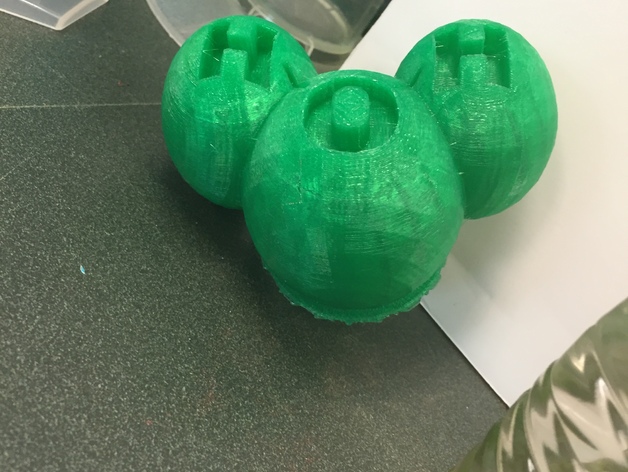
Water Molecule
thingiverse
Human: Project Name: Water Molecule Penny Test Overview & Background: I'm an intern at a Water Resources Institute, helping out with the education and outreach program. Objectives: To let students not just view, but hold and truly understand a water molecule. Through this activity, we can also teach them about cohesion, adhesion, and surface tension and how they impact water and experiments. Audiences: We do this with students from kindergarten to high school seniors, adjusting the final info for age and learning goal accordingly. Subjects: Earth Science, Chemistry Skills Learned (Standards): Teamwork, properties of water, independence in working, and properties of water. Also, a working knowledge of cohesion, adhesion, and surface tension. Lesson/Activity: We use this to explain water's special qualities. Focusing on cohesion, adhesion, and surface tension, we let them design their own experiment setup. They're tasked with figuring out how many drops can fit on a penny. Working in pairs, they conduct six trials - three on heads and three on tails. Duration: 10-30 minutes Preparation: Explain the concept to them and provide each pair with a small beaker of water, two basic pipettes, six pennies, and a tray for the pennies. Have them predict which side can hold more (or if they might be equal) and how many drops might fit. Let them figure out the rest on their own. Some will use one penny or all six; others will break it down into separate trials for heads and tails. When starting, ensure they drop drops until it spills over and stop when it does. Also, make sure they work together and exchange data. After finishing, have them draw a conclusion about which side held more (or if they found it equal). Discuss their differing results and how that could have happened. Then introduce the idea of cohesion, adhesion, and surface tension, explaining how this can affect the test they just did. If they're young, discuss the difference in drop sizes or pennies. This is where you should use the water molecule to show them what causes water to be unique. Finally, have them think of ways to eliminate variables and make the test more precise, as well as what else they could do to further the experiment. Rubric & Assessment: Ensure they made predictions, wrote down data, and drew a conclusion. Most credit should come from a lab report explaining how they conducted the test, how cohesion, adhesion, and surface tension may have affected their results, and how they could change the experiment or further the idea. If this is a younger group, this could be done in discussion instead. Print Settings Printer Brand: MakerBot Printer: MakerBot Replicator (5th Generation) Rafts: Yes Supports: No Infill: 10% Notes: 2 Walls
With this file you will be able to print Water Molecule with your 3D printer. Click on the button and save the file on your computer to work, edit or customize your design. You can also find more 3D designs for printers on Water Molecule.
